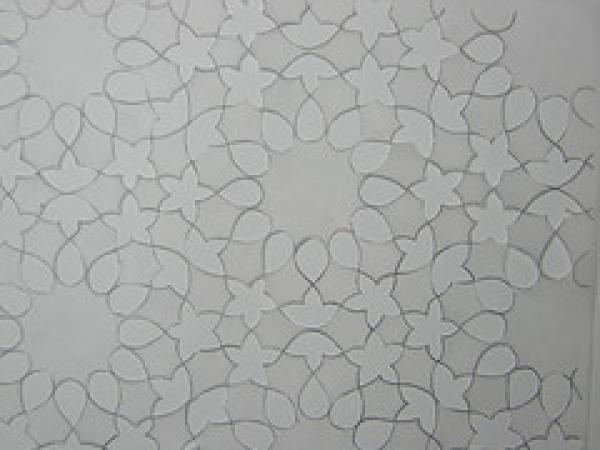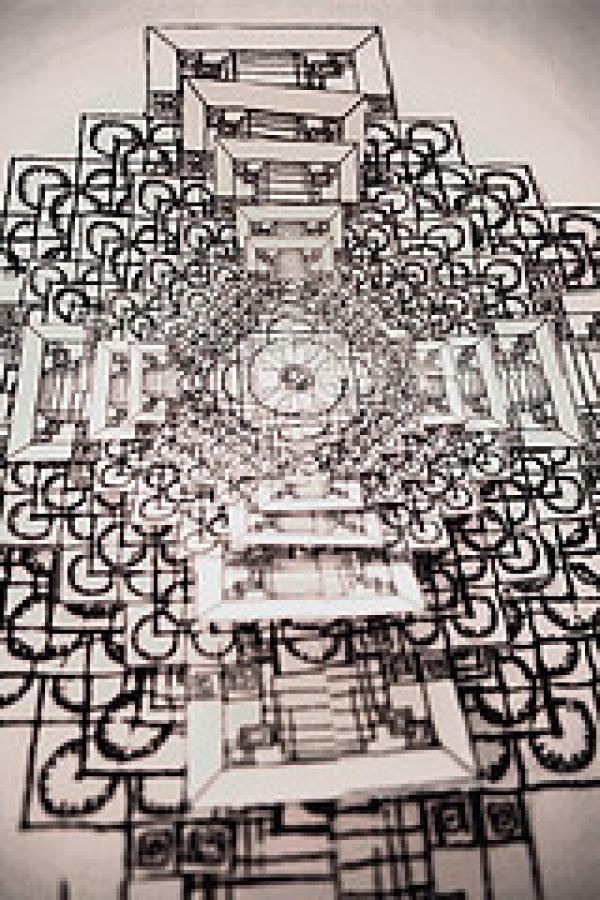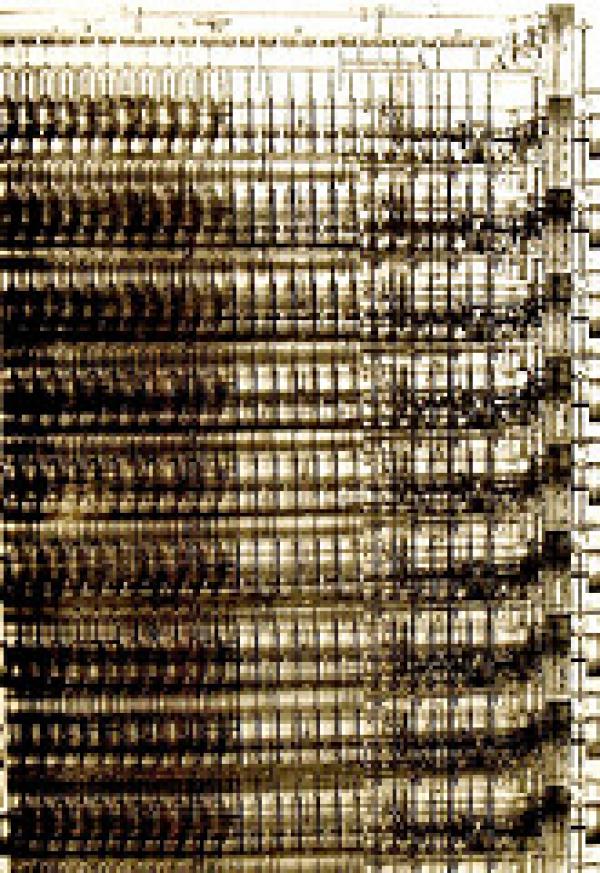My residency in the Wimbledon College of Art Drawing Centre Project Space unfolded in three separate phases. In the intervening months between the first and second phases, Iâ??d gone to India for a month and come back; revisited Green Street and the South Asian Textiles display at the V&A several more times; reflected and tried to order and then re-order the photographic material.
At every point what confounded me was the way that different worlds and different ways of seeing the world seemed to jostle: before the second part of the residency started, I had time to reflect on the way ornament and pattern seem to reveal the underlying world-pictures of their makers. This is what Iâ??d like to write about in this post.
There was a spew of pattern, some far, far too inexpensive for the work it represented and some precious beyond any price. In the shops as in the museum’s South Asian archive, this ornament and pattern came from both Hindu and Islamic sources; the street and the museum also proffered a wealth of English sources, both from colonial and post-colonial times, in the form of Victorian Gothic Revival imagery jumbled up with the ‘international modern’. But such genealogies, although interesting, were not my main focus.
In these weeks between the first and second phase of the Wimbledon residency, I made various drawings; the one here was an earlier attempt to draw an Islamic geometric pattern using geometric principles. Trying (unsuccessfully, I think) to do this left me amazed at the skill of Islamic draughtspeople.

(This laborious attempt, I must painfully confess, took me some time.)
But what I learned from it was that if it were repeated, it would behave in a certain way. Islamic geometric pattern often lets the eye travel across the field it occupies and then, because the repetition can go on forever, wander out into a suggestion of infinity. Geometric pattern originates in the same ancient interest in mathematics that made Eastern astronomy pre-eminent, and it alludes to a divine perfection in the worldâ??s design, the endless possibilities in geometry for crystalline, kaleidoscopic patterning.
Â

Â
On a Hindu stupa (a temple-like reliquary) in southern India the exponential explosion of gods, humans and creatures all from one tiny invisible point also suggests the worldâ??s space conceived as inherently generative, endlessly fertile, maternal. I tried to develop a drawing expressing this, starting with a tiny  ground plan of a Hindu stupa which I found in Adam Hardyâ??s book, â??Form, Transformation and Meaning in Indian Temple Architecture: Space and Time in Representation and Designâ??, (1998, in Paradigms of Indian Architecture, Collected Papers on South Asia no.13, ed. G.H.R. Tillotson, Centre of South Asian Studies, School of Oriental and African Studies, University of London, (London:Curzon Press) 107-134).
This small image I found intriguing; I appropriated it and then worked on it to make it hugely proliferate. Here are two versions.
 Â Â Â Â Â
     
Â
In their very different ways the ornament associated with religious cultures implies a world where the notion of infinity is, at least in some contexts, still connected to that of timelessness. The pencil drawing above left, done rather delicately on tracing paper, is so different from an image which I had made a few years before, evoking a nineteenth century textile mill. This was compiled simply by putting together repeatedly another appropriated image, this time a single drawing, a steel engraving by a 19th century Manchester engineer showing, very functionally, the parts of a textile mill machine for maintenance purposes.

Â
The repeated image seems to me to be full of noise and clacking machine time. But in every case the appropriation of a single tiny image, followed by making it insistently repeat itself, seems to reveal more clearly something of the different world-view each embodies.